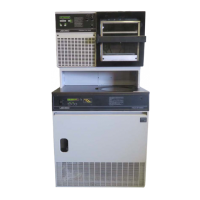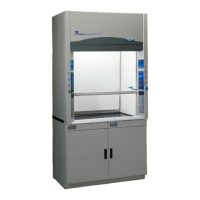Chapter 3: Getting Started
Product Service 1-800-522-7658
Trifluoroacetic Acid (TFA)
Dimethyl Sulfoxide (DMSO)
Methyl t-Butyl Ether (MTBE)
Lid Acrylic C D C D D D D C D D C D D
Bearings High Carbon Steel D D D D D D D D D D D
Lid Gasket EPDM D D D D D C C D
Rotor Shaft Stainless Steel D D D
Valve Stainless Steel D D D
O Rings Viton (Fluorocarbon) C C C D C
Fittings Polypropylene D C
Rotor Anodized Aluminum D D
Rotor Hub Acetal (Delrin) C C C D D D C D C
Tubing PVC D C D D D D D D D C D D D D
Chamber Teflon coated Aluminum
Bearings Stainless Steel D D D
Lid Gasket EPDM D D D D D C C D
O Rings Viton (Fluorocarbon) C C C D C
Fittings Polypropylene D C
Rotor Teflon coated Aluminum
Rotor Hub Polypropylene D C
Tubing PVC D C D D D D D D D C D D D D
Chamber Stainless Steel D D D
Lid Acrylic C D C D D D D C D D C D D
Cold Trap Gasket Neoprene D D C D D C D D D D D C D
Chamber Stainless Steel D D D
Lid Stainless Steel D D D
Cold Trap Gasket Neoprene D D C D D C D D D D D C D
C- Moderate Degradation- Questionable use
D- Severe Degradation- Infrequent use recommended- immediate thorough cleaning required
If a rotary vane vacuum pump is used, most compounds used in the
CentriVap will degrade the oil if allowed to enter to pump. Frequent oil
changes are required.
Diaphragm vacuum pumps sold by Labconco have wetted parts either made
from PTFE or protected by PTFE coatings and are suitable for nearly all
procedures.
When using compounds in the CentriVap that are hostile to the materials of
construction, it is imperative that the equipment is appropriately maintained.
After each run, clean up all residues, spills and materials that might have
splashed in the chamber using agents suitable for the substance involved.

